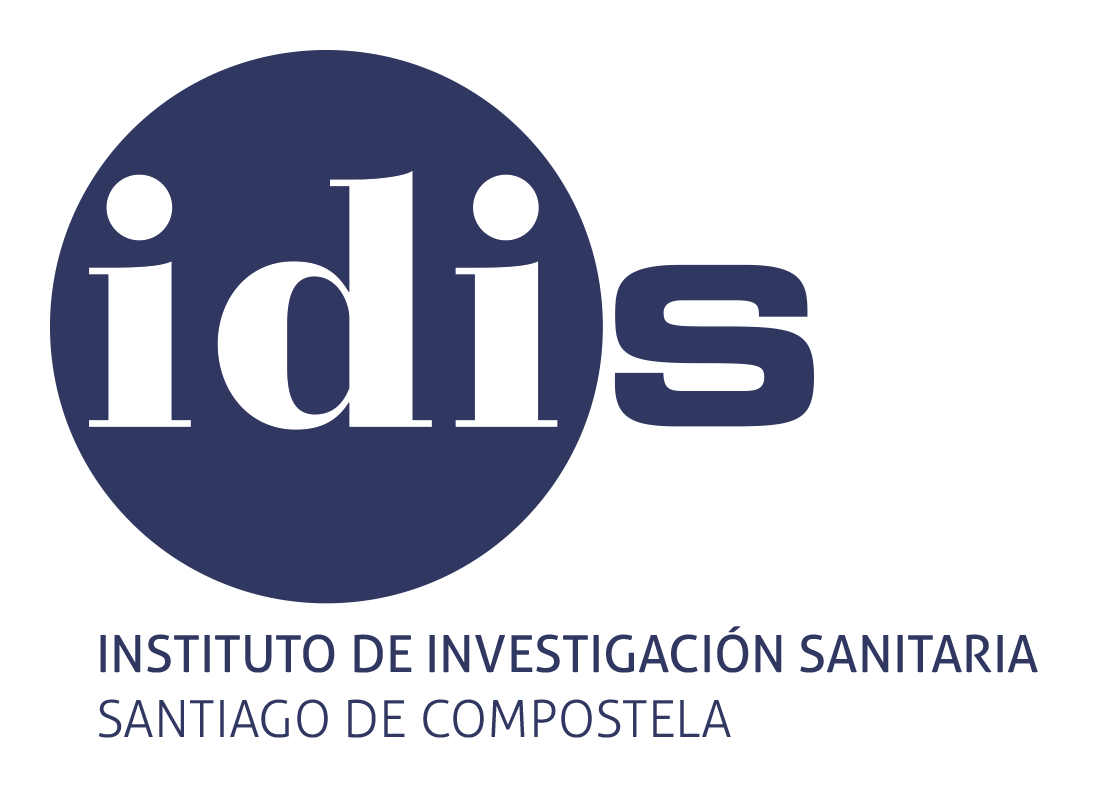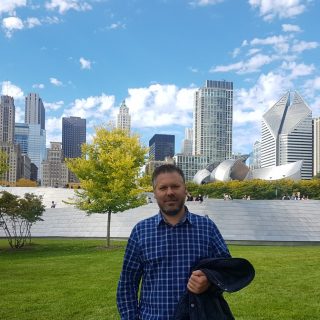ÁREA: NEUROCIENCIAS
Objectives and lines of research
Lines of research
The Neuroaging Group presents 3 main lines of research:
1. Early Diagnosis and Therapy of Alzheimer’s Disease and other dementias (main line)
Currently, Alzheimer’s disease is the leading cause of dementia and disability in people older than 64 years. In Europe there are some 7.5 million people affected by some type of dementia, and considering the increase in the aging of the population and the survival rate, it is estimated that by 2050 these values will grow exponentially, making the impact of dementia more pronounced. disease in healthcare systems. Currently there is no effective treatment to reverse the course of Alzheimer’s disease, and the detection of the disease in its early stages is still a great challenge for modern medicine. Today, the diagnosis of this disease takes place when a large neuronal loss has already occurred (recent estimates indicate a value close to 70%). Because of this, a lot of effort is being devoted to the development of new, more effective tools. The proposed scientific activity constitutes a response to the need for an early diagnosis. Being able to diagnose the disease earlier and therefore delaying its onset is estimated to represent a saving of 50% in the total costs associated with this disease.
Specifically, this line of research aims to develop nanoplatforms, neuroimaging, and in vitro tests for the diagnosis and therapy of Alzheimer’s Disease (AD) and other dementias.
2. Biomarkers and regenerative therapy in neurological diseases associated with aging (secondary line)
In addition to dementia, stroke is another neurological pathology associated with aging and is the leading cause of morbidity and mortality in Europe. Currently there is no effective pharmacological treatment for intracerebral hemorrhage and pharmacological or mechanical reperfusion emerges as an effective therapy for acute ischemic stroke, but such treatment reaches less than 10% of patients. Due to this, it is necessary to identify new biomarkers to improve the management of these patients, as well as to develop new therapies. One section of the proposed scientific activity aims to identify biomarkers in ischemic and hemorrhagic stroke, as well as the development of cell therapy and regenerative medicine (through in vivo reprogramming) as therapeutic options for stroke and dementia.
3. Neurobiology underlying neurological diseases associated with aging
Finally, every disease is associated with molecular mechanisms. It is vitally important to identify these mechanisms that may constitute new therapeutic targets in prevalent neurological diseases associated with aging such as dementia and cerebrovascular disease. The proposed scientific activity presents a line of secondary research focused on the identification of molecular mechanisms, in patients as well as preclinical models, underlying these pathologies and their subsequent testing as biomarkers or therapeutic targets.
Research team
Projects
Publications
- Fernandez-Lozano C, Hervella P, Mato-Abad V, Rodríguez-Yáñez M, Suárez-Garaboa S, López-Dequidt I, Estany-Gestal A, Sobrino T, Campos F, Castillo J, Rodríguez-Yáñez S, Iglesias-Rey R. Random forest-based prediction of stroke outcome. Sci Rep. 2021 May 12;11(1):10071. doi: 10.1038/s41598-021-89434-7.
- Botelho J, Leira Y, Viana J, Machado V, Lyra P, Aldrey JM, Pías-Peleteiro JM, Blanco J, Sobrino T, Mendes JJ. The Role of Inflammatory Diet and Vitamin D on the Link between Periodontitis and Cognitive Function: A Mediation Analysis in Older Adults. Nutrients. 2021 Mar 12;13(3):924. doi: 10.3390/nu13030924.
- da Silva-Candal A, López-Dequidt I, Rodriguez-Yañez M, Ávila-Gómez P, Pumar JM, Castillo J, Sobrino T, Campos F, Iglesias-Rey R, Hervella P. sTWEAK is a marker of early haematoma growth and leukoaraiosis in intracerebral haemorrhage, Stroke Vasc Neurol. 2021 Dec;6(4):528-535. doi: 10.1136/svn-2020-000684.
- Carrera C, Cárcel-Márquez J, Cullell N, Torres-Águila N, Muiño E, Castillo J, Sobrino T, Campos F, Rodríguez-Castro E, Llucia-Carol L, Millán M, Muñoz-Narbona L, López-Cancio E, Bustamante A, Ribó M, Álvarez-Sabín J, Jiménez-Conde J, Roquer J, Giralt-Steinhauer E, Soriano-Tárraga C, Mola-Caminal M, Vives-Bauza C, Navarro RD, Tur S, Obach V, Arenillas JF, Segura T, Serrano-Heras G, Martí-Fàbregas J, Delgado-Mederos R, Freijo-Guerrero MM, Moniche F, Cabezas JA, Castellanos M, Gallego-Fabrega C, González-Sanchez J, Krupinsky J, Strbian D, Tatlisumak T, Thijs V, Lemmens R, Slowik A, Pera J, Kittner S, Cole J, Heitsch L, Ibañez L, Cruchaga C, Lee JM, Montaner J, Fernández-Cadenas I; International Stroke Genetic Consortium and the Spanish Stroke Genetic Consortium. Single nucleotide variations in ZBTB46 are associated with post-thrombolytic parenchymal haematoma, Brain. 2021 Sep 4;144(8):2416-2426. doi: 10.1093/brain/awab090.
- Ávila-Gómez P, Vieites-Prado A, Dopico-López A, Bashir S, Fernández-Susavila H, Gubern C, Pérez-Mato M, Correa-Paz C, Iglesias-Rey R, Sobrino T, Bustamante A, Wellmann S, Montaner J, Serena J, Castillo J, Hervella P, Campos F. Cold stress protein RBM3 responds to hypothermia and is associated with good stroke outcome. Brain Commun. 2020 Jun 4;2(2):fcaa078. doi: 10.1093/braincomms/fcaa078. eCollection 2020.
- Leira Y, Domínguez C, Ameijeira P, López-Arias E, Ávila-Gómez P, Pérez-Mato M, Sobrino T, Campos F, Blanco J, Leira R. Mild systemic inflammation enhances response to OnabotulinumtoxinA in chronic migraineurs. Sci Rep. 2021 Jan 13;11(1):1092. doi: 10.1038/s41598-020-80283-4.
- Heitsch L, Ibanez L, Carrera C, Binkley MM, Strbian D, Tatlisumak T, Bustamante A, Ribó M, Molina C, Dávalos A, López-Cancio E, Muñoz-Narbona L, Soriano-Tárraga C, Giralt-Steinhauer E, Obach V, Slowik A, Pera J, Lapicka-Bodzioch K, Derbisz J, Sobrino T, Castillo J, Campos F, Rodríguez-Castro E, Arias-Rivas S, Segura T, Serrano-Heras G, Vives-Bauza C, Díaz-Navarro R, Tur S, Jimenez C, Martí-Fàbregas J, Delgado-Mederos R, Arenillas J, Krupinski J, Cullell N, Torres-Aguila NP, Muiño E, Cárcel-Márquez J, Moniche F, Cabezas JA, Ford AL, Dhar R, Roquer J, Khatri P, Jiménez-Conde J, Fernandez-Cadenas I, Montaner J, Rosand J, Cruchaga C, Lee JM; International Stroke Genetics Consortium. Early Neurological Change After Ischemic Stroke Is Associated With 90-Day Outcome. Stroke. 2021 Jan;52(1):132-141. doi: 10.1161/STROKEAHA.119.028687.
- Gómez-Lado N, López-Arias E, Iglesias-Rey R, Díaz-Platas L, Medín-Aguerre S, Fernández-Ferreiro A, Posado-Fernández A, García-Varela L, Rodríguez-Pérez M, Campos F, Del Pino P, Ruibal Á, Pardo-Montero J, Castillo J, Aguiar P, Sobrino T. [18F]-FMISO PET/MRI Imaging Shows Ischemic Tissue around Hematoma in Intracerebral Hemorrhage. Mol Pharm. 2020 Dec 7;17(12):4667-4675. doi: 10.1021/acs.molpharmaceut.0c00932.

